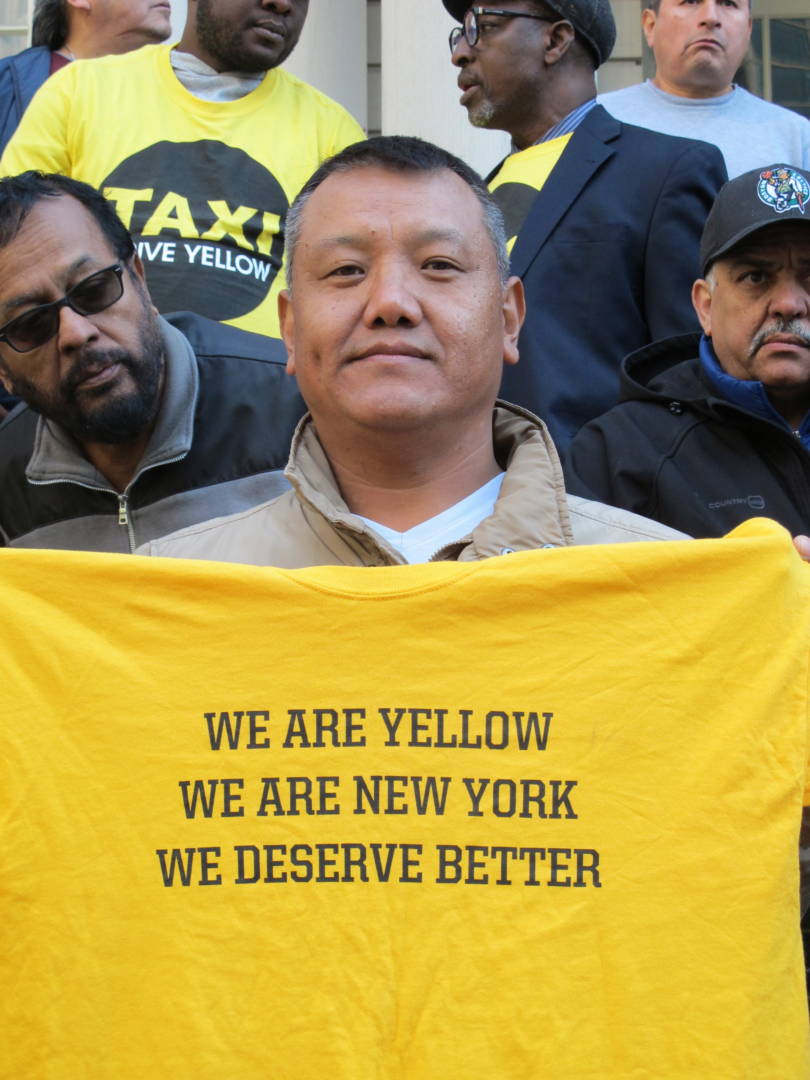
NEW YORK, N.Y.—The New York Times’ exposé of massive fraud and predatory loan practices in the taxi-medallion business didn’t shock the union representing yellow-cab drivers.
“We’ve been sounding the alarm on the crisis of suicides, foreclosures, and bankruptcies among our city’s professional drivers for years,” New York Taxi Workers Alliance executive director Bhairavi Desai said in a statement. “The story of our yellow taxi owner-driver members is finally front-page news. The rich got richer and the city raked in profit while working-class immigrant drivers of color were swindled and pushed into financial despair. It shouldn’t have taken nine suicides and thousands of families destroyed for people to listen, but we are determined to end this crisis.”
In an extensive two-part series published May 19-20, the Times detailed how a network of politically connected credit unions, banks, and loan brokers drove up the price of medallions from $200,000 to more than $1 million between 2000 and 2014, when the bubble burst as app-based companies slashed into yellow cabs’ income. Like their counterparts in mortgage banking in the years before the Great Recession, they offered loans even when they knew the drivers didn’t make enough to pay them back. The loans often had onerous terms that the overwhelmingly immigrant drivers didn’t understand, such as “balloon” payments that increased drastically after a few years. The city Taxi and Limousine Commission, the Times added, collaborated because the increased prices brought in millions of dollars in revenue, particularly under mayors Rudolph Giuliani and Michael Bloomberg.
NYTWA member Mohammad Hoque, a Bangladeshi immigrant living in Queens, borrowed $1 million in 2014 to buy a medallion. Hoque, who was making $30,000 a year, didn’t realize that the agreement he signed would require him to pay more than $1.7 million, according to the Times. Working more than 80 hours a week, he now averages about $1,400 a month after expenses and the $5,000 loan payments.
More than 950 owner-drivers have filed for bankruptcy, the Times reported. Three of the nine cabbies who committed suicide in the last year and a half were owner-drivers deep in debt: Nicanor Ochisor, Yu Mein Kenny Chow, and Roy Kim.
Medallion broker Andrew Murstein told the Fox Business Network in 2012 that taxis were “little cash cows running around the city spitting out money.”
The Times story, the Independent Drivers Guild said in a statement, “reveals what the driver community has known all along but Big Taxi has tried to cover up: Skyrocketing medallion prices were devastating for New York City’s taxi drivers. By artificially creating this bubble, taxi industry leaders and predatory lenders put the price of ownership out of reach for drivers, dashing the retirement plans of drivers across the city.”
The Guild, which advocates for app-based drivers at Uber and other companies, added that “many app-based drivers are saddled with predatory leases, forcing them to pay far too much each week just to go to work, not unlike the predatory loans of the taxi industry.” It urged the city to “crack down on the taxi industry predators as well as the predatory leasing companies.”
NYTWA is advocating a five-point program to aid indebted owner-drivers. First, the City Council should “establish a permanent taskforce to provide oversight of the medallion lending market,” and oversee a program to forgive all loan amounts that exceed the current market value it determines. Second, medallion mortgage payments should be capped at $900 a month. Third, New York State should exempt yellow taxis from the $2.50 congestion surcharge it imposed in February on fares in the southern half of Manhattan.
Fourth, the TLC should give drivers “a modest increase in fares that goes solely into their pockets” and set one fare across all sectors of the industry “so that Uber and Lyft cannot starve app drivers to starve taxi drivers.”
Finally, it said, the city needs to establish a retirement fund for all drivers. Thousands of owner-drivers who were depending on selling their medallions to finance their old age “have seen their retirements wiped out,” it explained, so “drivers in their 70s are continuing to work seven days a week with no end in sight.”



